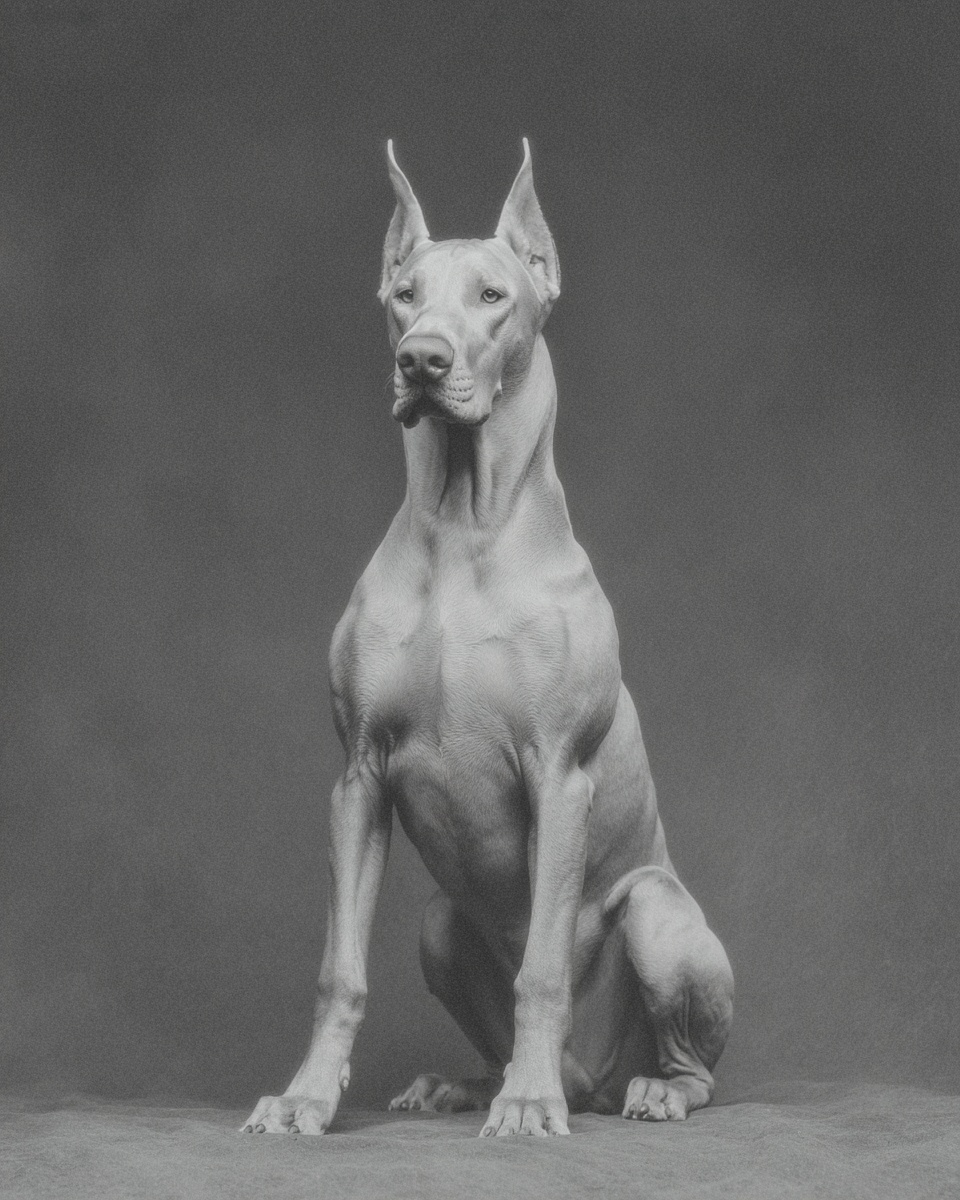Doberman Pinscher

Description
The Doberman Pinscher was bred in Germany in the late 1800s by Louis Dobermann, a tax collector who needed a strong, protective companion. This breed combines power, speed, and alertness, making it a natural guard dog and a versatile working partner. Dobermans weigh between 60 and 100 pounds, with a sleek, muscular build that moves with purpose and grace. Dobermans bond deeply with their families but often prefer one main person. They can be wary of strangers and need early socialization to learn how to behave around new people and animals. Despite their tough look, they’re affectionate and protective, especially with kids they grow up with. Their sharp minds and athletic bodies make them suited for police work, search-and-rescue, and competitive dog sports.
Grooming
The Doberman’s short, smooth coat is easy to maintain. Shedding is light to moderate, so weekly brushing with a rubber curry or bristle brush keeps loose hair under control and skin healthy. Bathe your Doberman every 4 to 8 weeks; don’t overdo it or you’ll strip natural oils. Trim nails every 2 to 4 weeks to avoid cracking or splitting. Check ears monthly for dirt or wax buildup and clean gently. - Brush weekly with rubber curry or bristle brush - Bathe every 4–8 weeks - Trim nails every 2–4 weeks - Clean ears monthly - Pro tidy as needed Dobermans come in Black & Rust, Blue & Rust, Red & Rust, White, and Fawn & Rust. The rust markings around the face and legs don’t need special care but keep an eye on white coats for any discoloration from dirt or saliva. Pro tip: Use a damp cloth to wipe down the coat between baths to keep it shiny and fresh.
Learn the Smooth routine:
→ Complete Smooth Grooming Guide
Walking
Dobermans need about 80 minutes of walking daily, split into two sessions. This breed thrives on purposeful exercise that challenges both body and mind. One walk can focus on brisk pacing or jogging, while the other can include training commands or scent games to keep your dog engaged. Example routine: - Morning: 40-minute brisk walk with obedience drills - Evening: 40-minute relaxed walk with sniffing and exploration Keep your Doberman on a sturdy leash and harness, as they can pull when excited. Vary the routes to expose them to different sights and smells. This helps prevent boredom and keeps their sharp instincts tuned. If your dog barks a lot during walks, try redirecting attention with treats or commands to maintain calm behavior.
Boarding
When boarding a Doberman, provide a crate at least 48 inches long to accommodate their athletic frame comfortably. These dogs enjoy active playtimes, so plan for two solid play sessions daily, mixing fetch or tug with scent and brain games to keep their minds sharp. Staff should introduce themselves slowly and predictably to build trust with this sometimes reserved breed. A consistent routine helps reduce stress and encourages good behavior. Dobermans appreciate clear boundaries and gentle guidance during their stay. Enrichment items like puzzle feeders or scent trails work well to keep them busy. They’re not fans of long periods alone, so human interaction is key. Staff should watch for signs of restlessness or barking and offer calming activities or breaks outside the crate when needed.